When a new drug hits the market, the work doesn’t end with approval. In fact, that’s just when the real safety monitoring begins. The FDA doesn’t just approve drugs and walk away. It watches them - closely, continuously, and with increasingly advanced tools - to catch problems that clinical trials missed. Why? Because clinical trials involve thousands of people over months or a few years. Real life involves millions of people over decades. And in that real world, rare side effects, dangerous interactions, and unexpected risks can show up long after the drug is prescribed by doctors and taken by patients.
How the FDA Tracks Problems After a Drug Is Approved
The FDA’s main tool for catching safety issues is the FDA Adverse Event Reporting System (FAERS). This is a giant database that’s been collecting reports since 1969. It now holds over 30 million entries - reports of side effects, medication errors, and even product quality problems. Anyone can submit a report: doctors, pharmacists, patients, or the drug companies themselves. Healthcare providers are the biggest contributors, making up about 63% of reports. Patients? Only 6%. That’s a big gap. But FAERS isn’t just a bucket of reports. It’s a signal-finding machine. The FDA uses statistical methods like Empirical Bayes Screening and Proportional Reporting Ratios to sift through the noise. They’re looking for patterns: Is a certain side effect showing up way more often with this drug than others? Is it happening in a specific group - like older adults or people with kidney disease? A single report doesn’t mean much. But if 50 people taking the same drug for arthritis start reporting liver damage in a few months, that’s a red flag.The Sentinel Initiative: Real-Time Monitoring on a Massive Scale
Before 2008, the FDA mostly waited for reports to come in. That’s passive surveillance - reacting after something happens. The Sentinel Initiative changed that. Launched with $120 million in funding, Sentinel uses electronic health records, insurance claims, and pharmacy databases from over 300 million Americans. That’s more than 90% of the U.S. population. Instead of waiting for someone to file a report, Sentinel actively checks for health events. For example, if a new diabetes drug is linked to a spike in heart attacks across multiple hospitals in Ohio, Illinois, and Texas within a month, Sentinel can flag it in days - not years. It’s like having a nationwide early warning system built into the healthcare system. In 2023, Sentinel could analyze data from 190 million covered lives. By February 2024, the FDA launched Sentinel 2.0, adding genomic data from 10 million people through partnerships with major biobanks. This means they can now see if certain genetic profiles make people more likely to have bad reactions to a drug.What Happens When a Problem Is Found?
Finding a signal is just the start. The FDA’s Office of Surveillance and Epidemiology brings together medical officers, epidemiologists, statisticians, and pharmacologists to review the data. They ask: Is this real? Is it serious? Is it common enough to warrant action? If the evidence is strong, the FDA can take several steps:- Update the drug’s label to warn about new risks
- Require a Risk Evaluation and Mitigation Strategy (REMS) - which might mean special training for doctors, patient monitoring, or restricted distribution
- Issue a safety communication to healthcare providers and the public
- Require the manufacturer to conduct a new postmarket study
- In rare cases, pull the drug off the market
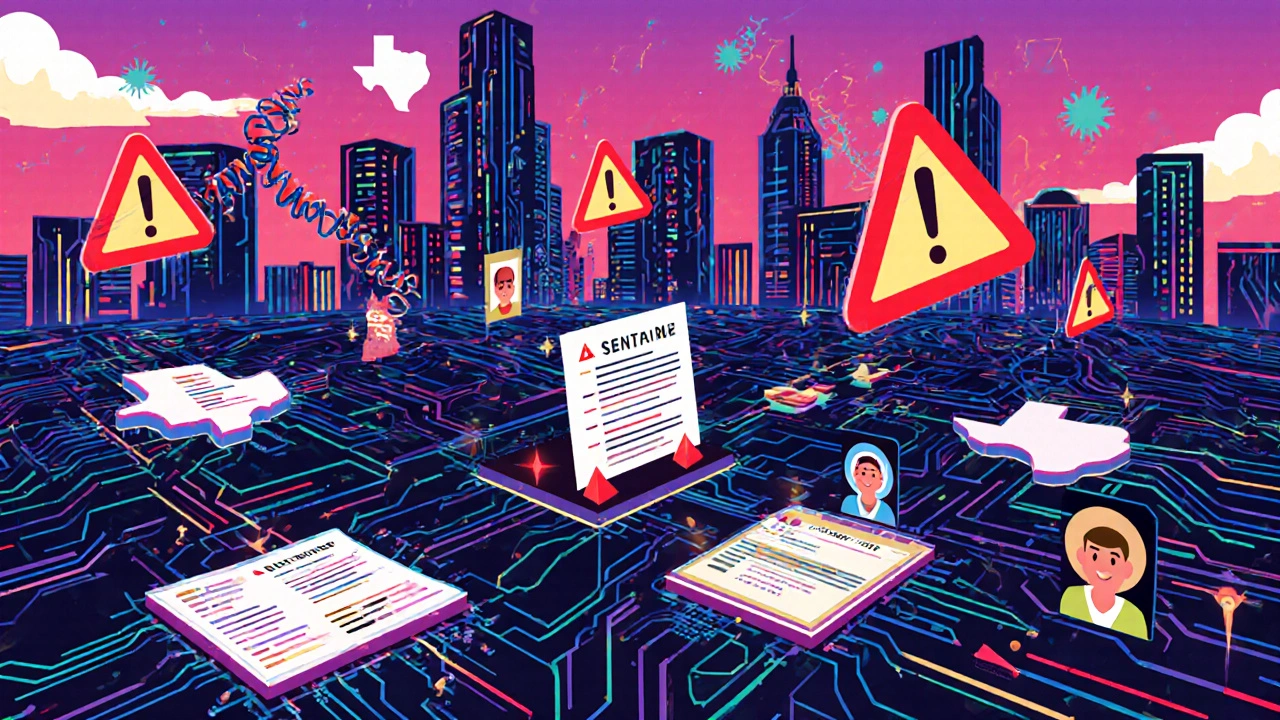
The Limits of the System
No system is perfect. FAERS, the main reporting tool, is built on voluntary reports. Studies show it only catches 1% to 10% of actual adverse events. Why? Because doctors are busy. Patients don’t know how to report. And sometimes, side effects are mistaken for other conditions. Drugs with low usage - like treatments for rare diseases - are especially hard to monitor. One study found it took an average of 4.7 years to detect safety signals for drugs used by fewer than 100,000 people. That’s nearly five years of patients being exposed to unknown risks. Another problem: delayed studies. The FDA can require drugmakers to run postmarket studies to check long-term safety. But a 2021 JAMA study found only 58% of these studies were done on time. The average delay? Over three years. And the Government Accountability Office found that for 37% of high-risk drugs approved between 2013 and 2017, the FDA never even required a follow-up study.Who’s Reporting - and Who’s Not
The gap between who reports and who should report is wide. While 63% of FAERS reports come from healthcare providers, only 6% come from patients. A 2023 survey by the FDA found that 72% of rare disease patients didn’t know how to report an adverse event. On Reddit, doctors admitted they rarely report because the process feels disconnected from their workflow. Meanwhile, drug companies are required to report serious adverse events within 15 days. That’s faster than in Europe, where companies have 90 days for expected side effects. But even with strict rules, some companies still bury negative data - a problem known as the “file drawer effect.” The FDA fights this by requiring periodic safety update reports every 6 to 12 months. If a company skips one, they risk fines or delayed approvals for new drugs.The Future: AI, Blockchain, and More Data
The FDA isn’t standing still. In late 2023, they rolled out InfoViP 3.0 - an AI-powered tool that uses natural language processing to scan FAERS reports faster and more accurately. Since 2018, this tech has boosted true signal detection by 27% and cut false alarms by 19%. By 2025, the FDA plans to integrate data from the NIH’s All of Us Research Program, which includes genetic, lifestyle, and environmental data from 1 million diverse Americans. That’s huge. It means they’ll soon understand not just *if* a drug causes a side effect, but *why* - and for whom. A blockchain-based reporting pilot is also in the works. The goal? To make patient reports more secure, tamper-proof, and easier to submit directly from smartphones or patient portals. By 2030, experts predict 75% of safety signals will come from active surveillance like Sentinel - not from passive reports. That’s a massive shift from today’s 35%.Why This Matters to You
If you or a loved one takes prescription medication, this system is your safety net. It’s why your doctor checks your liver enzymes before prescribing certain drugs. It’s why you get a medication guide with your pills. It’s why some drugs have black box warnings - the strongest warning the FDA can give. You don’t need to be an expert to help. If you notice a new symptom after starting a drug - especially if it’s severe or unusual - report it. You can do it through MedWatch, the FDA’s online portal. It takes about 17 minutes, on average. That’s less time than your morning coffee. The system works best when it’s used by everyone - doctors, patients, pharmacists. The more data it gets, the faster it can protect the next person.How long does it take for the FDA to act on a drug safety concern?
There’s no fixed timeline. For clear, serious risks - like a sudden spike in heart attacks linked to a new diabetes drug - the FDA can issue a safety alert within weeks. For complex signals that require more analysis, it can take 6 to 18 months. The goal is to act as fast as possible without jumping to conclusions. The FDA prioritizes speed but never at the cost of accuracy.
Can I report a side effect myself?
Yes. Anyone can report an adverse event to the FDA through MedWatch, their online reporting system. You don’t need a doctor’s note or proof. Just describe what happened, the drug name, and when it started. Patient reports are especially valuable because they capture real-world experiences that doctors might miss. Even if you’re unsure, it’s better to report it.
Are generic drugs monitored the same way as brand-name drugs?
Yes. The FDA treats generic and brand-name drugs the same for safety monitoring. Once approved, both are tracked in FAERS and Sentinel. The only difference is the manufacturer - but the safety system doesn’t care who made it. If a generic drug causes a pattern of liver damage, the FDA will act just like it would with the brand-name version.
Why do some drugs get pulled from the market while others don’t?
It’s about risk versus benefit. A drug for a life-threatening condition like cancer might have serious side effects - but if it extends life by months or years, the FDA keeps it on the market with strong warnings. A drug for mild acne with a rare but deadly liver risk? That’s more likely to be pulled. The FDA weighs how many people benefit, how severe the side effects are, and whether safer alternatives exist.
What’s the difference between FAERS and Sentinel?
FAERS is a database of voluntary reports - like a hotline for side effects. Sentinel is an active surveillance system that automatically scans electronic health records from millions of patients. FAERS is good for catching rare, unexpected events. Sentinel is better for spotting trends in real time, especially with common drugs. Together, they cover both the slow-burning signals and the urgent red flags.
How does the FDA handle new types of drugs like gene therapies?
Gene therapies and complex biologics are among the hardest to monitor because they’re new and their effects can last years. The FDA requires these drugs to have long-term follow-up studies - sometimes for 15 years. Sentinel 2.0 now includes genomic data to track whether a gene therapy causes unintended changes in DNA over time. The agency is also working with biobanks to build patient registries specifically for these therapies.
What You Can Do
You don’t need to be a scientist to help keep drugs safe. Here’s what you can do:- Read the medication guide that comes with your prescription
- Write down any new symptoms after starting a drug - even if they seem minor
- Report adverse events through MedWatch, even if you’re not sure
- Ask your doctor if your drug has a REMS program and what you need to know
- Stay informed: Check the FDA’s Drug Safety Communications page quarterly
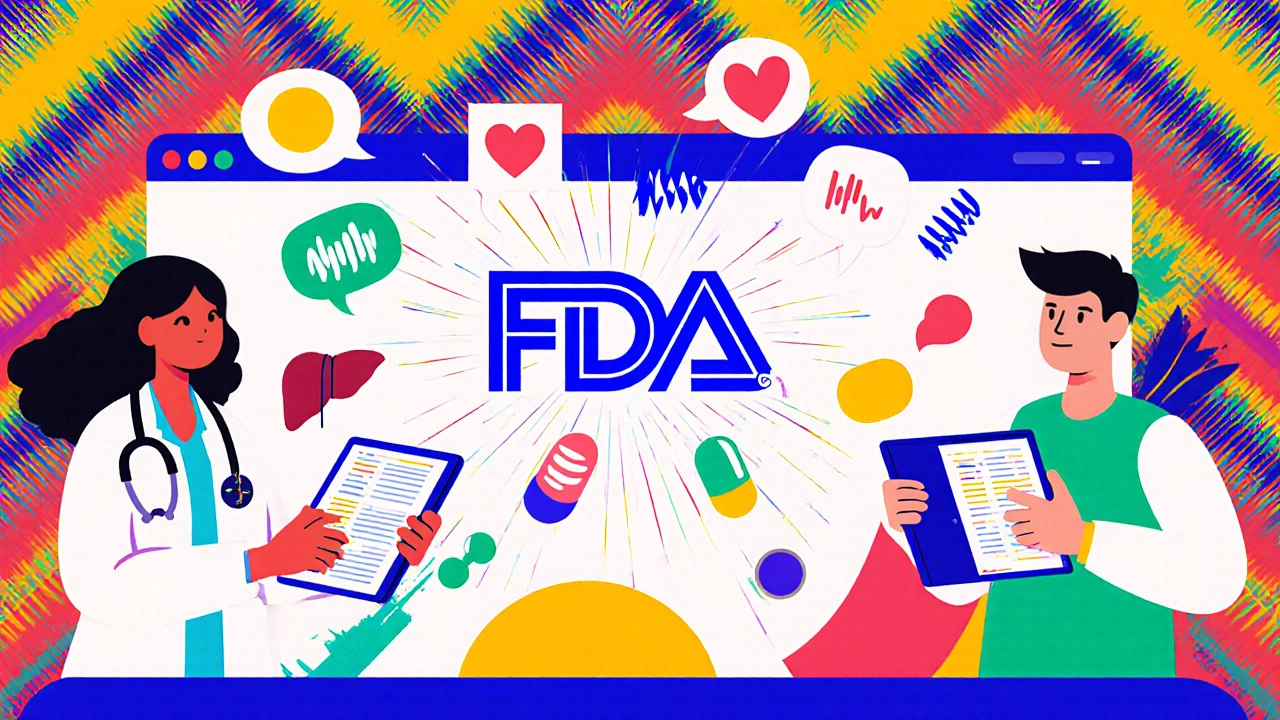
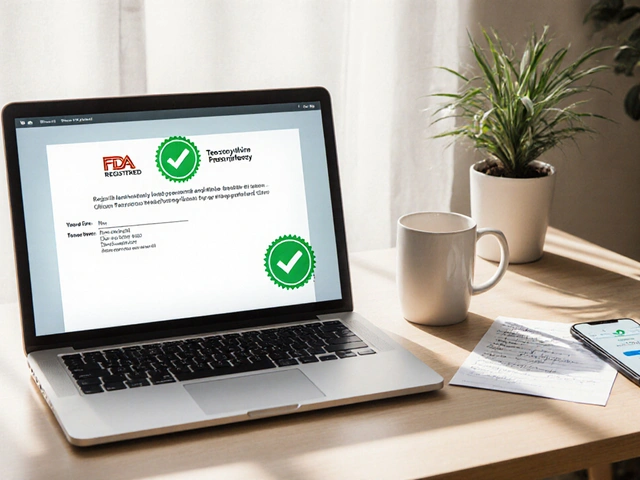
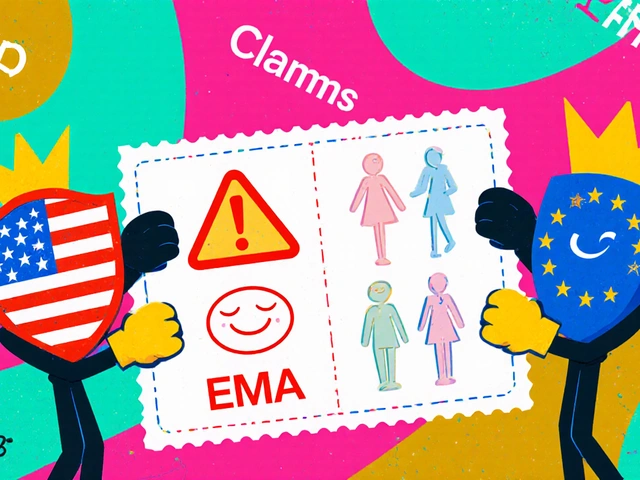

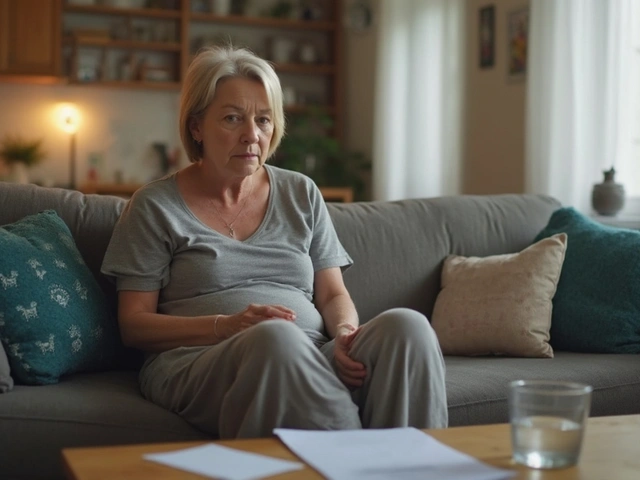

Gerald Cheruiyot
November 20, 2025 AT 14:24The FDA's system is way more sophisticated than most people realize. I used to think once a drug was approved, it was basically forgotten. Turns out they're watching millions of people in real time with AI and genomic data. Wild to think we're living in the age of predictive pharmacology. This is science fiction becoming real life.
Michael Fessler
November 21, 2025 AT 05:38FAERS is fundamentally flawed due to reporting bias-healthcare providers dominate the dataset, which skews toward iatrogenic events and away from patient-reported psychosocial or quality-of-life impacts. Sentinel mitigates this by leveraging EHRs, but even then, socioeconomic disparities in healthcare access create blind spots. The real issue? We're still treating adverse events as binary outcomes rather than continuum-based phenotypes. We need longitudinal, granular, patient-centric data streams-not just aggregated signals.
daniel lopez
November 22, 2025 AT 08:55They're lying. The FDA doesn't give a damn about safety-they're in bed with Big Pharma. Every time a drug gets pulled, it's because the public outcry got too loud. They let thousands die quietly while waiting for 'enough data.' Sentinel? Just a PR stunt. They're collecting your DNA, your prescriptions, your doctor visits-all to sell to insurers and pharma. This isn't monitoring. It's surveillance with a white coat.
Nosipho Mbambo
November 22, 2025 AT 15:10Okay, so... the system is technically impressive, I guess? But why does it feel like we're just waiting for someone to die before anything happens? I mean, 4.7 years to detect a signal for rare disease drugs? That's not monitoring-that's negligence with a fancy name. And why do I have to report side effects myself? Shouldn't the system just... know?
Katie Magnus
November 23, 2025 AT 02:04Ugh. Another boring government tech post. Like anyone cares about FAERS vs. Sentinel. Can we please talk about something that actually matters? Like why my antidepressant made me cry during a Zoom meeting? That’s real life. Not some database with 30 million entries. I’m just trying to get through Tuesday.
King Over
November 24, 2025 AT 15:48They got AI now. That’s cool. I just hope they don’t start auto-pulling drugs because some algorithm thinks a headache is a sign of doom. People get headaches. It’s normal. Let’s not turn medicine into a spreadsheet.
Johannah Lavin
November 26, 2025 AT 05:57Y’all. This is so important. I had a friend who had a rare reaction to a generic blood pressure med. She didn’t even know she could report it. She thought it was just ‘bad luck.’ If someone had told her about MedWatch, maybe someone else wouldn’t have gotten hurt. Please. If you’ve ever had a weird side effect-just report it. It takes 17 minutes. That’s less time than scrolling TikTok. You could literally save a life. 💙
Ravinder Singh
November 28, 2025 AT 05:50Love how the FDA is finally using data like this. Back in India, we don’t have anything close to Sentinel. Patients suffer silently because reporting systems are broken or nonexistent. The fact that they’re now integrating genomic data? That’s next-level. It means personalized safety. Imagine knowing your DNA profile tells you whether a drug will wreck your liver before you even take it. That’s not just science-it’s justice.
Russ Bergeman
November 29, 2025 AT 04:32Wait, so you’re telling me the FDA doesn’t even require follow-up studies for 37% of high-risk drugs? That’s not oversight-that’s malpractice. And you expect me to trust this system? You’re kidding me. This isn’t a safety net-it’s a sieve. And you’re just sitting here like it’s fine? No. No. No.
Dana Oralkhan
November 30, 2025 AT 16:42Thank you for writing this. I’m a nurse, and I’ve seen patients ignore side effects because they think it’s ‘just normal.’ This post reminded me to hand out the MedWatch info with every script. It’s small, but it matters. And yes-I report. Even when I’m tired. Even when it’s inconvenient. Someone’s life might depend on it.
Jeremy Samuel
December 1, 2025 AT 15:39sentinel? more like sientinel. also why is this even a thing? if you take a drug and get sick, thats your problem. not the fda's. they shouldnt have to babysit every idiot who cant read the label.
Destiny Annamaria
December 2, 2025 AT 21:23Okay but can we talk about how wild it is that patients only make up 6% of reports? I’m a college student with chronic pain-I’ve been on 7 meds. I’ve reported every weird symptom. Why? Because I’m not just a patient. I’m a data point. And I want my data to help someone else. If you’re reading this-go report. Even if you think it’s dumb. It’s not.
Ron and Gill Day
December 4, 2025 AT 12:44This is all a scam. The FDA is just a puppet for Pfizer and Merck. They let dangerous drugs stay on the market for years-then they panic and slap on a black box warning like it’s a Band-Aid. They don’t care about you. They care about stock prices. And you? You’re just a statistic in their spreadsheet.
Alyssa Torres
December 5, 2025 AT 17:56My mom took a drug for 18 months before we realized it was causing her memory loss. We didn’t know how to report it. She didn’t even know it was connected. This post made me cry-not because it’s sad, but because it’s fixable. If more people knew how to report, we could stop this before it happens to someone else. Please. Share this. Even if you think it’s boring. Someone’s grandma might be next.